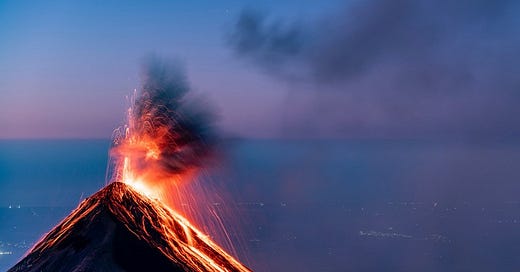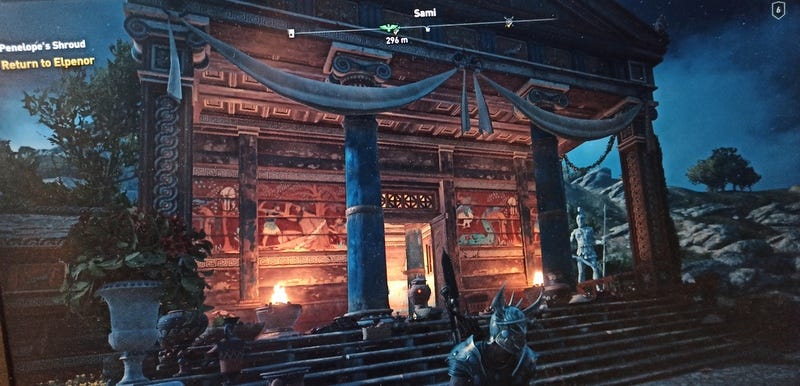Did This Tree Of Fire Break Our World Apart?
"A blob of nightmarishly gargantuan proportions" and other wonders of modern geology.
Hello again! This is Everything Is Amazing, a newsletter about stoking your curiosity, ignoring clickbait, remembering more of what matters, and magical-looking pillars of light that are perfectly natural phenomenon and also not really there?
(Or putting it another way: a lot. It’s a newsletter about a lot. But all of it is grounded in credible science, I promise.)
A couple of updates to previous newsletters. First: remember how the study of meteorites is helping astronomers identify the origins of all the water on the Earth?
A few days ago, the BBC ran this story about what’s become known as the Winchcombe meteorite, which fell onto someone’s driveway in the Gloucestershire town of Winchcombe in 2021. It’s now being described as “the UK’s most important fireball” - because the water it holds is chemically the same as the stuff in our seas, streams, rivers and aquifers.
It’s another indicator that some of our water came not from comets bringing water from the unimaginably far edges of the solar system, but from the fragments of inner-system rubble that originally came together to form the Earth.
(The further question, as I detailed in that newsletter, is whether that meteorite is typical of the stuff in our planet’s mantle, adding weight to the idea that most of our water was trapped in the rock that formed the Earth, in the form of hydrogen - ie. it was here from the start - or whether it arrived after the Earth was formed, in the form of a “rain” of water-containing meteorites lasting billions of years.)
And the person looking at this is 23 year old Niamh Topping, a PhD student in her first year at the University of Leicester, studying water and rock reactions in the early solar system. What an absolutely thrilling way to start your career! Whew. (And it’s also nice seeing all this as a high-profile news story.)
Second: in an idle moment I installed the videogame Assassin’s Creed Odyssey on my laptop, and beyond the improbable parkour (in plate armour? Are you kidding?) and the unfriendly assassinaterin'-people side of things, I really loved how Ubisoft Quebec really did their research into how it’s now believed Greek temples actually looked at the time:
All that colour! As I wrote here a few months back, there’s plenty of evidence that Classical Greece was colourful in a way that would look startling (or even like an eyesore) to our modern eyes - so it’s nice seeing a game as big and popular as this one pick up on it.
(And to Ubisoft Quebec’s immense credit, they also included a Discovery Tour version of the game, which disables all the quests and stabby bits to allow you to explore their version of ancient Greece in peace - except with extra guided tours and pop-up historical facts, as if you’re wandering through the biggest open-air museum in history. More of this please, game designers!)
Lastly, I’m just chucking this in because it’s delightful:



Anyway! Today, as part of the season-within-a-season running just for paid subscribers, we’re taking another look under the surface of our planet, at recent discoveries in cutting-edge geology. And really, nothing gets bigger than today’s topic.
It turns out there’s a vast blob of something down there - and it looks a bit like a tree?





